Themed collection Drinking water oxidation and disinfection processes

Themed issue on drinking water oxidation and disinfection processes
Guest editors Tom Bond, Wenhai Chu, Urs von Gunten and Maria José Farré introduce the Environmental Science: Water Research & Technology themed issue on drinking water oxidation and disinfection processes.
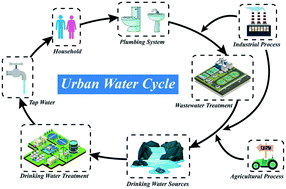
Environ. Sci.: Water Res. Technol., 2020,6, 2252-2256
https://doi.org/10.1039/D0EW90042G
Editorial Perspectives: Scottish Water case study
This article discusses the removal of disinfection by-product precursors in Scottish Water treatment works.
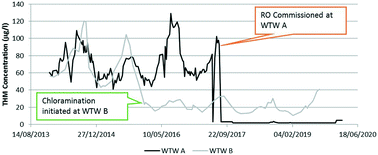
Environ. Sci.: Water Res. Technol., 2020,6, 2257-2258
https://doi.org/10.1039/D0EW90038A
Molecular mechanisms and potential applications of the intrinsic chemiluminescence produced from the degradation of haloaromatic pollutants during environmentally-friendly advanced oxidation processes
Unprecedented ˙OH-dependent intrinsic chemiluminescence (CL) can be produced during the AOPs-mediated degradation of highly toxic haloaromatics (XAr), and a new CL analytical method was developed to measure XAr and monitor their degradation kinetics.
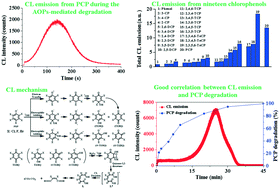
Environ. Sci.: Water Res. Technol., 2020,6, 2259-2274
https://doi.org/10.1039/D0EW00325E
Ecotoxicological effects of disinfected wastewater effluents: a short review of in vivo toxicity bioassays on aquatic organisms
This review focuses on the in vivo bioassays of disinfected wastewater effluents with respect to aquatic organisms in order to provide an insight into further studies on the ecotoxicological effects.
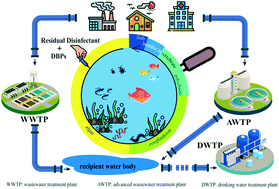
Environ. Sci.: Water Res. Technol., 2020,6, 2275-2286
https://doi.org/10.1039/D0EW00290A
The reactions of chlorine dioxide with inorganic and organic compounds in water treatment: kinetics and mechanisms
The reaction kinetics and mechanisms of ClO2 reactions with inorganic and organic compounds are overviewed.
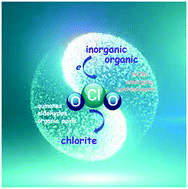
Environ. Sci.: Water Res. Technol., 2020,6, 2287-2312
https://doi.org/10.1039/D0EW00231C
The forest or the trees: a critical review on the analysis of total organic halogen (TOX) in drinking waters and its utility as a water quality parameter
TOX can be used as an indicator for regulated DBP concentrations in, and toxicity of, disinfected waters.
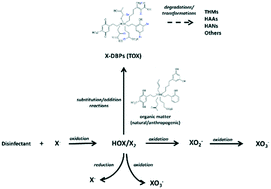
Environ. Sci.: Water Res. Technol., 2020,6, 2313-2330
https://doi.org/10.1039/D0EW00300J
Effects of residual disinfectants on the redox speciation of lead(II)/(IV) minerals in drinking water distribution systems
This study investigated the reaction kinetics on the oxidative transformation of lead(II) minerals by free chlorine (HOCl) and free bromine (HOBr) in drinking water distribution systems.
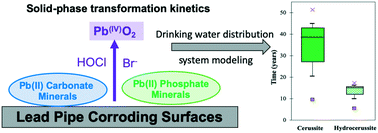
Environ. Sci.: Water Res. Technol., 2021,7, 357-366
https://doi.org/10.1039/D0EW00706D
Treating water containing elevated bromide and iodide levels with granular activated carbon and free chlorine: impacts on disinfection byproduct formation and calculated toxicity
Granular activated carbon effectively controlled disinfection byproduct formation and calculated toxicity, especially at high influent bromide levels.
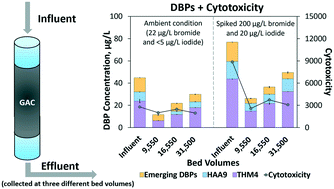
Environ. Sci.: Water Res. Technol., 2020,6, 3460-3475
https://doi.org/10.1039/D0EW00523A
Composite toxicity assays for enhanced assessment of decentralized potable reuse systems
Decentralized direct potable reuse systems present new opportunities for resilient and sustainable facilities of the future, but potential risks must be studied carefully using advanced methods that consider potential toxicity from known and unknown oxidation byproducts.
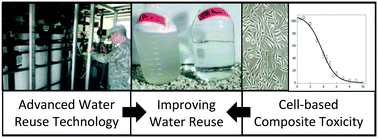
Environ. Sci.: Water Res. Technol., 2020,6, 3306-3315
https://doi.org/10.1039/D0EW00437E
Photodegradation of antihistamine chlorpheniramine using a novel iron-incorporated carbon material and solar radiation
Water pollution due to emerging contaminants is a topic that should be researched to a greater extent because of the ignorance of adverse effects these pollutants may have on living beings.
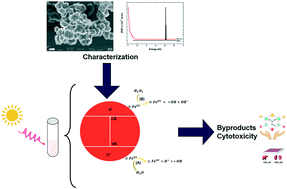
Environ. Sci.: Water Res. Technol., 2020,6, 2607-2618
https://doi.org/10.1039/D0EW00413H
Enhancement of ozonation efficiency employing dead-end hollow fiber membranes
Dead end membrane operation maximizes O3 dissolution.
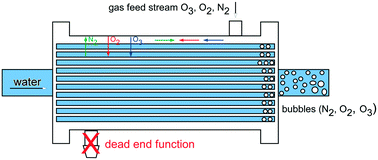
Environ. Sci.: Water Res. Technol., 2020,6, 2619-2627
https://doi.org/10.1039/D0EW00294A
Reaction of chlorine dioxide with organic matter – formation of inorganic products
Chlorine dioxide reacts with electron-rich moieties of NOM, such as phenols, to form different inorganic products. The yields of inorganic products depend on the moieties and help to identify the pathway.
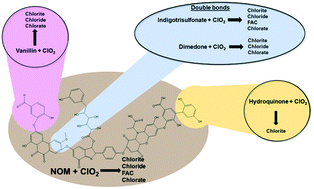
Environ. Sci.: Water Res. Technol., 2020,6, 2597-2606
https://doi.org/10.1039/D0EW00408A
UV/chlorine vs. UV/H2O2 for water reuse at Orange County Water District, CA: a pilot study
On-site demonstration tests evaluated 1,4-dioxane removal in reverse osmosis permeate (RO permeate) at the Orange County Water District (OCWD) Advanced Water Purification Facility (AWPF).
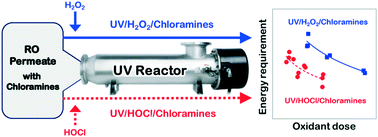
Environ. Sci.: Water Res. Technol., 2020,6, 2416-2431
https://doi.org/10.1039/D0EW00316F
Source characterization and removal of N-nitrosamine precursors during activated sludge treatment
Municipal wastewater discharges after secondary biological treatment (e.g., the activated sludge (AS) process) are a major potential source of N-nitrosamine precursors which may impact downstream source water quality.

Environ. Sci.: Water Res. Technol., 2020,6, 2432-2443
https://doi.org/10.1039/D0EW00425A
Advanced electrochemical oxidation for the simultaneous removal of manganese and generation of permanganate oxidant
Emerging electrochemical systems, such as advanced electro-oxidation, provide a potentially powerful alternative to conventional oxidation processes which can often be unsuitable for small, remote and decentralised system applications.
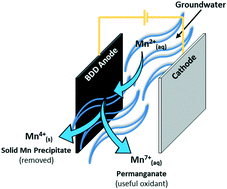
Environ. Sci.: Water Res. Technol., 2020,6, 2405-2415
https://doi.org/10.1039/D0EW00261E
Rapid, high-sensitivity analysis of oxyhalides by non-suppressed ion chromatography-electrospray ionization-mass spectrometry: application to ClO4−, ClO3−, ClO2−, and BrO3− quantification during sunlight/chlorine advanced oxidation
A novel, non-suppressed ion chromatography-mass spectrometry method enables rapid analysis of all regulated oxyhalides at sub-μg L−1 levels in natural waters and waters subjected to chlorination and sunlight/chlorine advanced oxidation.
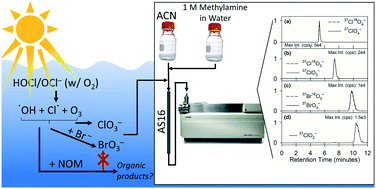
Environ. Sci.: Water Res. Technol., 2020,6, 2580-2596
https://doi.org/10.1039/D0EW00429D
UVC-based advanced oxidation processes for simultaneous removal of microcontaminants and pathogens from simulated municipal wastewater at pilot plant scale
The challenge of providing good quality reclaimed water free from contaminants of emerging concern, even at small concentrations, i.e., microcontaminants (MCs) and pathogens are main hot topics worldwide.
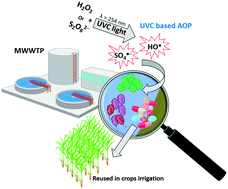
Environ. Sci.: Water Res. Technol., 2020,6, 2553-2566
https://doi.org/10.1039/D0EW00279H
Comparison of the impact of ozone, chlorine dioxide, ferrate and permanganate pre-oxidation on organic disinfection byproduct formation during post-chlorination
Pre-oxidation is commonly used to mitigate the formation of byproducts during post-disinfection.
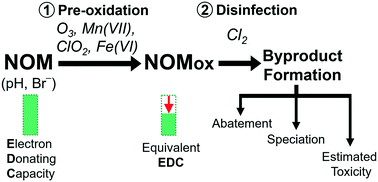
Environ. Sci.: Water Res. Technol., 2020,6, 2382-2395
https://doi.org/10.1039/D0EW00411A
Detecting hydrogen peroxide reliably in water via ion chromatography: a method evaluation update and comparison in the presence of interfering components
Hydrogen peroxide (H2O2) in complex water matrix can be detected reliably by ion chromatography (IC) due to its superior separation ability.
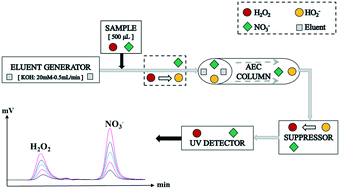
Environ. Sci.: Water Res. Technol., 2020,6, 2396-2404
https://doi.org/10.1039/D0EW00234H
Assessing disinfection byproduct risks for algal impacted surface waters and the effects of peracetic acid pre-oxidation
Peracetic acid pre-oxidation of algal impacted waters can reduce formation of trihalomethanes but promote formation of haloacetonitriles, due to the degradation of dissolved organic matter and coincident release of intracellular organic matter.
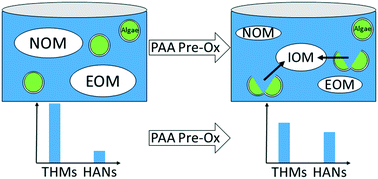
Environ. Sci.: Water Res. Technol., 2020,6, 2365-2381
https://doi.org/10.1039/D0EW00237B
Total organic halogen (TOX) species formation at different locations in drinking water distribution systems
TOCl, TOBr and TOI concentrations were quantified quarterly at 11 US drinking water treatment plants and distribution systems.

Environ. Sci.: Water Res. Technol., 2020,6, 2542-2552
https://doi.org/10.1039/D0EW00421A
Degradation of sulfachloropyridazine by UV-C/persulfate: kinetics, key factors, degradation pathway
Antibiotics are frequently detected in water, which can pose a great threat to human health.
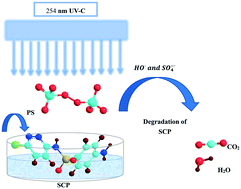
Environ. Sci.: Water Res. Technol., 2020,6, 2510-2520
https://doi.org/10.1039/D0EW00239A
Chlorination of N,N-dimethylhydrazine compounds: reaction kinetics, mechanisms, and implications for controlling N-nitrosodimethylamine formation during ozonation
Pre-chlorination can eliminate N,N-dimethylhydrazine-type ozone–NDMA precursors, which is useful for controlling NDMA in drinking water ozonation.
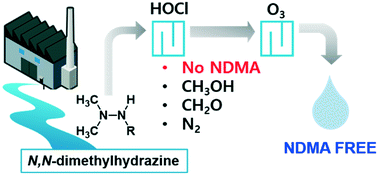
Environ. Sci.: Water Res. Technol., 2020,6, 2567-2579
https://doi.org/10.1039/D0EW00299B
Tracking the formation of new brominated disinfection by-products during the seawater desalination process
Ultrahigh resolution mass spectrometry revealed substantial dissolved organic matter changes and the formation of numerous bromine-containing disinfection by-products during the seawater desalination process.
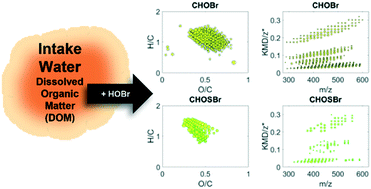
Environ. Sci.: Water Res. Technol., 2020,6, 2521-2541
https://doi.org/10.1039/D0EW00426J
High-throughput and reliable determination of 13 haloacetic acids and dalapon in water and evaluation of control strategies
A simple, fast, highly-sensitive and selective method for the simultaneous determination of 13 haloacetic acids and dalapon in water was developed and applied to evaluate two strategies to control the concentrations of the target analytes in water.

Environ. Sci.: Water Res. Technol., 2020,6, 2499-2509
https://doi.org/10.1039/D0EW00296H
Purification and removal of the low molecular weight fraction of polyDADMAC reduces N-nitrosodimethylamine formation during water treatment
Residual organics in cationic polymer contribute disproportionately to NDMA formation, but can be removed through polymer purification.
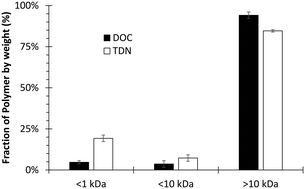
Environ. Sci.: Water Res. Technol., 2020,6, 2492-2498
https://doi.org/10.1039/D0EW00392A
Removal trends of sulfonamides and their ARGs during soil aquifer treatment and subsequent chlorination: effect of aerobic and anaerobic biodegradation
Soil aquifer treatment significantly decreased the SA concentration in recharged synthetic water and aerobic biodegradation played a great role.
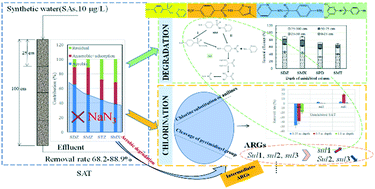
Environ. Sci.: Water Res. Technol., 2020,6, 2331-2340
https://doi.org/10.1039/D0EW00270D
On the role of a graphene oxide/titania catalyst, visible LED and ozone in removing mixtures of pharmaceutical contaminants from water and wastewater
Pharmaceuticals removal by photocatalytic ozonation: evaluation of radiation fluence, GO content and GO–TiO2 dosage synergies in ultrapure water photocatalytic ozonation. Two reaction kinetic periods proposed for wastewater photocatalytic ozonation.
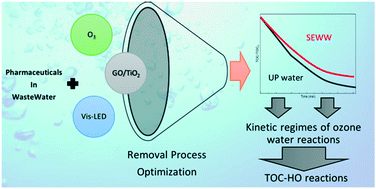
Environ. Sci.: Water Res. Technol., 2020,6, 2352-2364
https://doi.org/10.1039/D0EW00276C
Formation and sorption of trihalomethanes from cross-linked polyethylene pipes following chlorinated water exposure
Formation and sorption of trihalomethanes (THMs) occurs in chlorinated waters exposed to cross-linked polyethylene (PEX) pipes, impacting water quality in building plumbing.
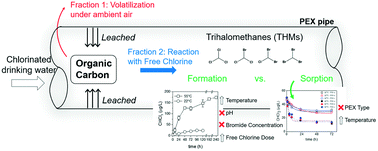
Environ. Sci.: Water Res. Technol., 2020,6, 2479-2491
https://doi.org/10.1039/D0EW00262C
Simultaneous ozonation of 90 organic micropollutants including illicit drugs and their metabolites in different water matrices
The ozonation of 90 chemically diverse organic micropollutants (OMPs) including four classes of illicit drugs and their metabolites was studied in pure buffered water, tap water and wastewater effluent at three specific ozone doses and three pH levels.

Environ. Sci.: Water Res. Technol., 2020,6, 2465-2478
https://doi.org/10.1039/D0EW00260G
Mixture effects of drinking water disinfection by-products: implications for risk assessment
Disinfection by-products (DBPs) in drinking water have been associated with increased cancer risk but effects of known DBPs cannot explain the mixture effects of disinfected water samples.
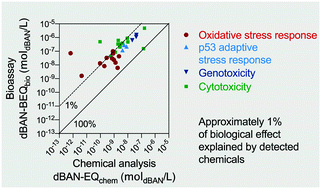
Environ. Sci.: Water Res. Technol., 2020,6, 2341-2351
https://doi.org/10.1039/C9EW00988D
Response surface methodology directed adsorption of chlorate and chlorite onto MIEX resin and study of chemical properties
For the first time, response surface methodology has been used to optimize the adsorption process of chlorite and chlorate by MIEX.
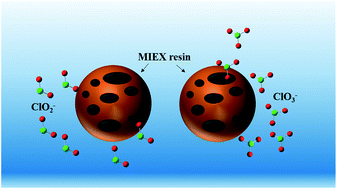
Environ. Sci.: Water Res. Technol., 2020,6, 2454-2464
https://doi.org/10.1039/C9EW01003C
Application of in vitro bioassays for water quality monitoring in three drinking water treatment plants using different treatment processes including biological treatment, nanofiltration and ozonation coupled with disinfection
In vitro bioassays indicative of different modes of action demonstrate the high quality of produced drinking water.
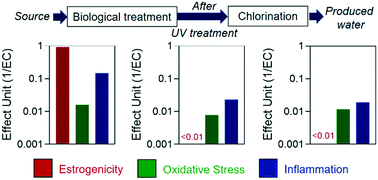
Environ. Sci.: Water Res. Technol., 2020,6, 2444-2453
https://doi.org/10.1039/C9EW00987F
About this collection
Guest Editors:
- Tom Bond University of Surrey, UK
- Wenhai Chu Tongji University, China
- Maria José Farré ICRA Catalan Institute for Water Research. Spain
- Urs von Gunten EAWAG, Switzerland
This collection showcases the latest advances in chemical, toxicological, epidemiological, microbiological, public health and engineering aspects of drinking water oxidation and disinfection processes.
Click here to return to the ESWRT homepage